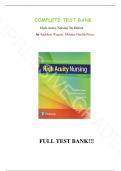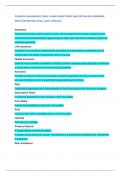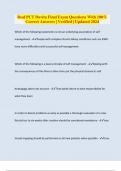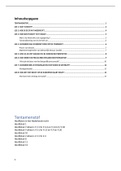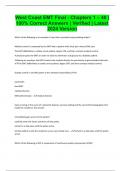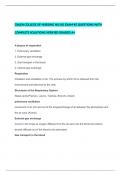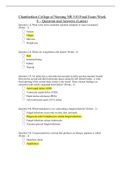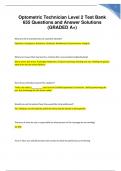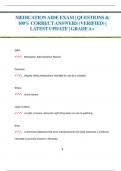Exam (elaborations)
FDIC TE - Loans Section 3.2 Exam Questions Verified Complete Solutions Current Update
- Course
- Institution
FDIC TE - Loans Section 3.2 Exam Questions Verified Complete Solutions Current Update Lending Policy - Answers - should not be a static document, but must be reviewed periodically and revised in light of changing circumstances surrounding the borrowing needs of the institution's customers as wel...
[Show more]




